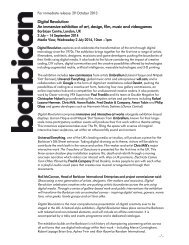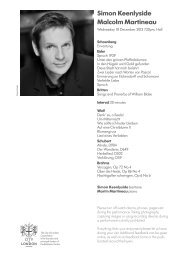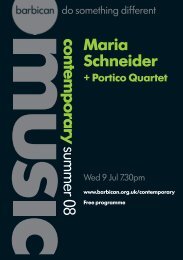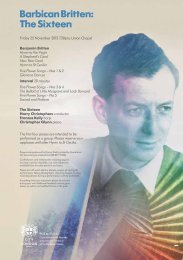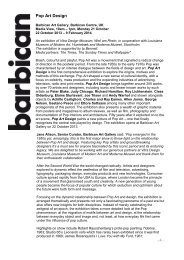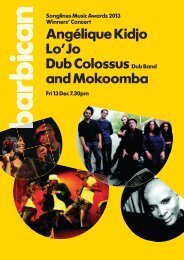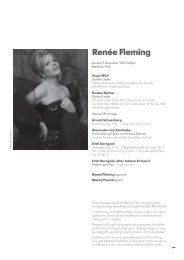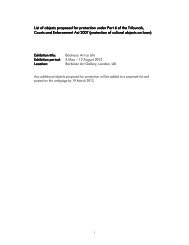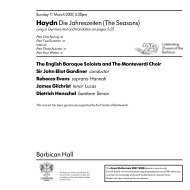Download your concert programme here - Barbican
Download your concert programme here - Barbican
Download your concert programme here - Barbican
You also want an ePaper? Increase the reach of your titles
YUMPU automatically turns print PDFs into web optimized ePapers that Google loves.
Wednesday 3 February<br />
The pianist is cast in the role of spell-master and illusionistin-chief,<br />
conjuring up undreamt-of beings and making<br />
them dance to his tunes, sometimes commanding the whole<br />
charade to cease so that he can take every role himself, as in<br />
the hypertrophic first-movement cadenza. Like the massive<br />
cadenza in the original version of Rachmaninov’s Third, this<br />
one occupies the structural place of a sonata recapitulation.<br />
The opening theme then closes the narrative frame,<br />
providing just a few seconds of calm for the soloist to<br />
regain composure.<br />
Then we are straight into a two-and-a-half-minute perpetualmotion<br />
Scherzo, consisting of no fewer than 1504 continuous<br />
semiquavers, challengingly laid out in parallel motion<br />
between the hands. Here the soloist doubles, in effect, as<br />
juggler and contortionist. The third movement is nominally an<br />
Intermezzo, but in character it comes across more like a<br />
grotesque march. Its extravagant gestures reminded<br />
Sviatoslav Richter of ‘a dragon devouring its young’, though<br />
when all is said and done perhaps this is only a pantomime<br />
dragon.<br />
For all the hand-flinging antics in the finale’s early stages, it<br />
contains more reflective episodes than the previous two<br />
movements. Two of these episodes have the makings of solo<br />
cadenzas, but neither grows to the monstrous dimensions of<br />
their counterpart in the first movement. Prokofiev was rarely<br />
one to strain himself unduly over such matters as structural<br />
transition, but the way he lets the second solo episode<br />
edge back towards the main theme is a compositional<br />
masterstroke. However, t<strong>here</strong> is nothing particularly subtle<br />
about the last few pages, which return us to the main business<br />
of neo-Lisztian acrobatics.<br />
Programme note © David Fanning<br />
INTERVAL<br />
5




